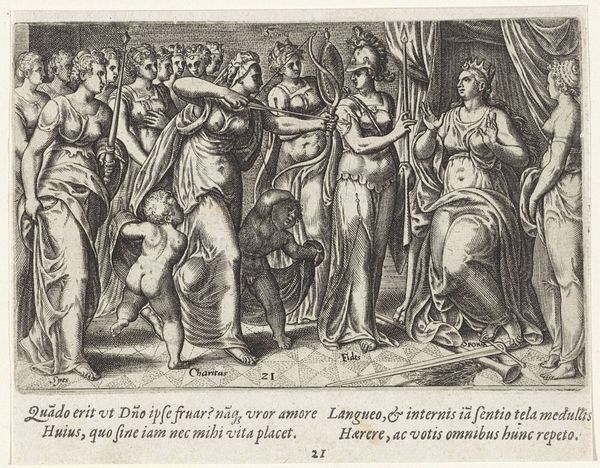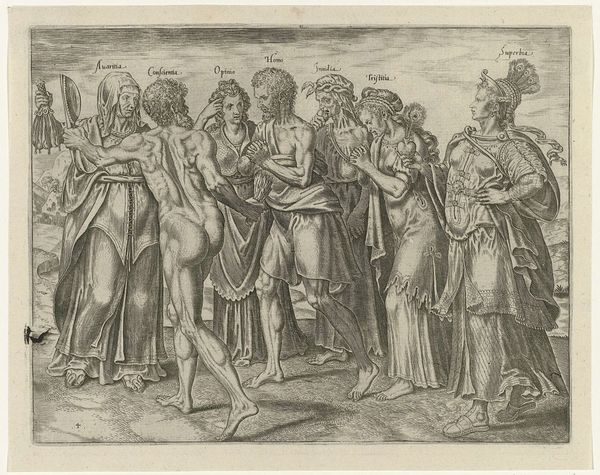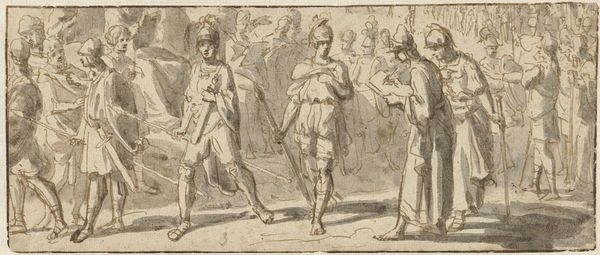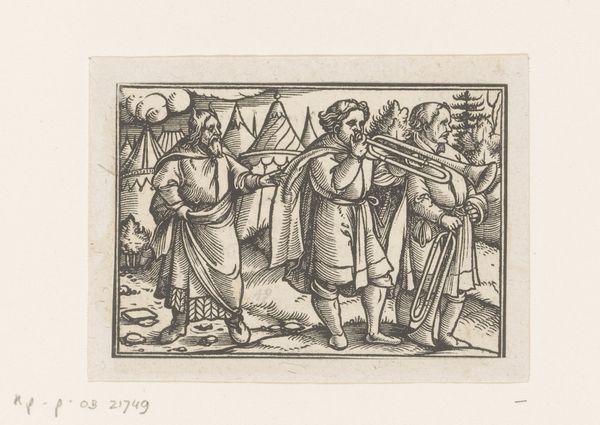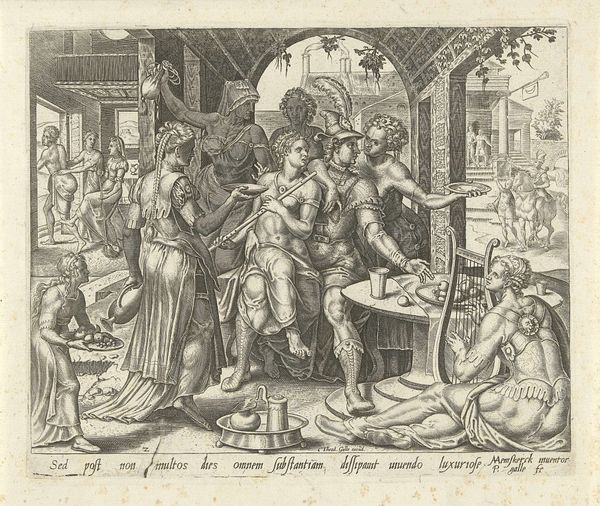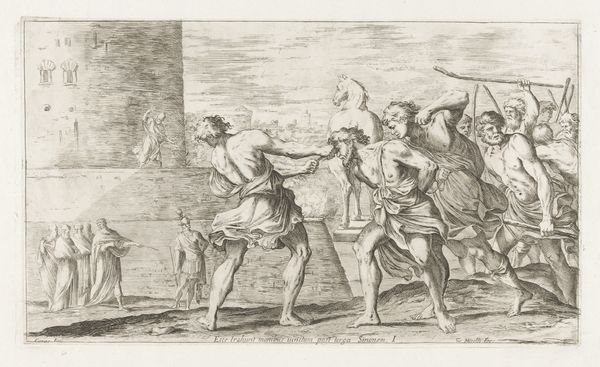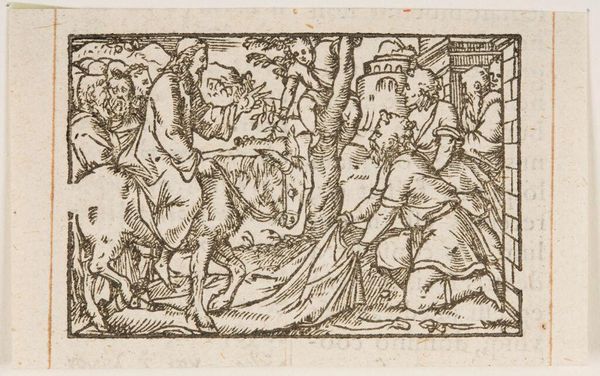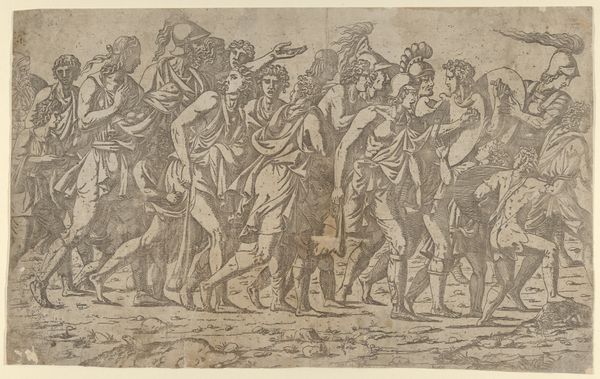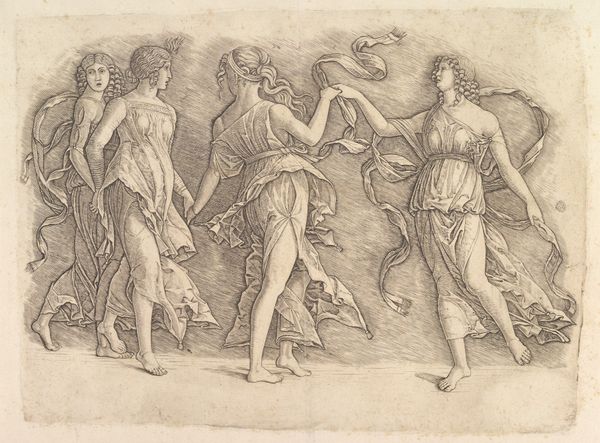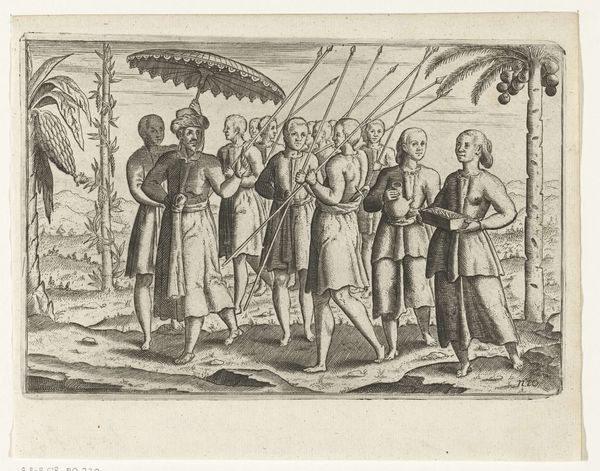
drawing, ink, engraving
#
drawing
#
narrative-art
#
figuration
#
11_renaissance
#
ink
#
history-painting
#
engraving
Dimensions: height 64 mm, width 155 mm
Copyright: Rijks Museum: Open Domain
Curator: This artwork, currently residing in the Rijksmuseum, is entitled "Triumph of Miriam". Created sometime between 1520 and 1562 by the artist known only as Monogrammist AC, this piece employs engraving techniques using ink to depict a scene of narrative and historical significance. Editor: My immediate impression is one of stark contrast. There's a dynamism in the procession of women with their instruments versus a chaotic background and remnants of struggle to the left. It really evokes a sense of power and victory, yet there is sadness too. Curator: Indeed. This drawing represents Miriam’s triumphant song and dance after the Israelites crossed the Red Sea, as told in the Book of Exodus. Seeing the defeat of the Egyptians, Miriam leads the women in celebration. Editor: And the contrast reflects that immediate aftermath; the horror they’ve escaped alongside the exhilaration of newfound freedom. Do we know the context in which this particular rendering was made? Curator: The early to mid-16th century was a period of immense religious and social upheaval. These visual representations of biblical stories allowed for personal reflection on deliverance and identity, themes very important during the rise of reformation ideologies. Art served as a potent force in religious and political discourse, shaping how these narratives were understood and disseminated. Editor: Looking closely, I notice how Miriam is centrally positioned, leading a procession primarily of women. This speaks to themes of female empowerment, especially pertinent during this period in which women's roles were strictly prescribed. It invites interpretation through a feminist lens, presenting Miriam not just as a leader, but as a symbol of female strength and resilience. Curator: Exactly. Further emphasizing these interpretations, this presentation of Miriam’s triumph and celebration serves as commentary and a lens into cultural and religious expressions of this era. The inclusion of musical instruments and dancing signals freedom. Editor: So, contemplating “The Triumph of Miriam”, it is about not only a historic or religious victory, but it also underscores the significance of artistic interpretation, especially in understanding gender and liberation within socio-political contexts. Curator: Absolutely, it highlights the interplay between artistic choices and prevailing social sentiments, enriching our grasp on cultural and historical values.
Comments
No comments
Be the first to comment and join the conversation on the ultimate creative platform.
